Hibiscus Plant Care in Florida
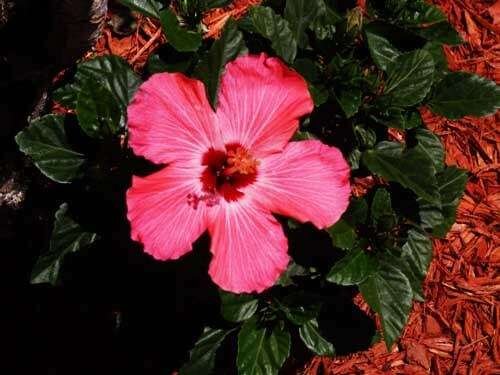
Hibiscus Plant Care
The Hibiscus plant is one of the most widely used plants in landscaping. Hibiscus produces beautiful flowers with a variety of bold colors, as soon as flowers wilt new ones open the next morning. Blooming time is usually from spring to the end of fall. With proper Hibiscus plant care, you can keep them healthy and growing at their best.
Types of Hibiscus Plant Varieties
Varieties are determined by plant growth habits, size, form, and color of flowers. Plants range from low spreading forms to upright reaching 20 feet in height. Some are compact and dense while others are open and thin. Hibiscus flowers can be single or double forms. Many variations exist between varieties. Basic flower colors are red, orange, yellow, white, lavender, or pink. There is a broad range of color combinations and mixes.
Hibiscus Placement
The proper placement is the first step in good Hibiscus plant care. They are used as informal hedges or screens, foundation plants, or as a background for other garden plants. They do not do well as formal sheared hedges. It is better to use a single variety and color for mass planting than mixing, for appearance. Single trunks called “Standards” is great for patios, terraces, and flower gardens. The Hibiscus tree is often placed in ceramic pots or plastic containers.
Planting Hibiscus should be according to their mature size, DO NOT plant too close together to avoid problems. Three to four feet apart is required for mass planting. Plant labels on Hibiscus care should give information on width at mature size.
Watering Hibiscus Plants
They should be watered thoroughly after planting and frequently until established. Once established water one time a week depending on rainfall and air temperature. During drought, Water heavily twice a week. Hibiscus needs to be in well-drained soil and doesn’t like being soaking wet. Proper watering care of Hibiscus is important in keeping them growing correctly.
Fertilizing Hibiscus Plants
To maintain a healthy growing plant regular fertilization is needed, proper treatment helps them with blooming. Hibiscus needs four light applications per year. One in early spring, the second after the first growth flush, the third in the middle of summer, and a fourth in the fall. The amount per application depends on the size of the Hibiscus plant.
Use fertilizer for shrubs containing the essential nutrients and micronutrients, iron, and manganese. Spread it beneath the canopy to slightly beyond the branches. Avoid piling it on the stems or base of the plant. Water immediately after applying Hibiscus fertilizer.
Hibiscus Care for Insects
A big part of the care of Hibiscus is insect control. Insects that can damage Hibiscus are:
- Aphids,
- Whiteflies,
- Thrips,
- Spider Mites,
- Mealybugs.
Pests can become a problem if the plant is not getting good air circulation. If large populations develop it can be difficult to eliminate them. Routine inspection is important in stopping an infestation. Treat insects with a “Contact” or “Systemic” spray pesticide. A regular program of using a “Systemic” insecticide can control them. Follow directions on the label, do not apply during extreme wind for good coverage and safety.
Disease Care for Hibiscus
Common Hibiscus diseases are
- Canker,
- Root Rot,
- Leaf Spot.
“Canker” is a fungus that causes the branches to die back. Reddish-Orange bodies will be found on the diseased bark. The best control is to prune off affected branches and destroy them. Do not leave them on the ground.
“Root Rot” is from too much water, overwatering, or poorly drained soil. When this occurs leaves will wilt and turn completely brown or grey. Treat immediately by spraying liquid fungicide, stop watering, and let the soil dry out. Soak ground with liquid fungicide for severe cases. Remove dead plants right away. A second application is needed after 10 days for the best disease care of Hibiscus for “Root Rot”.
“Leaf Spot” is caused by bacteria, but usually is not a severe problem. It is noticeable by brown spots on leaves. Pick off spotted leaves if not too many have this. Spray the plant with a fungicide and rake up fallen leaves. Repeat spraying after 10 days. Plant care for the disease is needed to keep Hibiscus staying in good health.
Yellow Leaves on Hibiscus Plants
Hibiscus plant leaves can turn yellow and the plant will look unsightly. This is a normal occurrence and leaves will eventually fall off, and new growth will appear. This is not a cause for alarm. You can pick them off when they turn yellow keeping a green look.
Hibiscus Care for Bud Dropping
Premature bud dropping can often be a problem, especially with some varieties of “Doubles”. These types may bloom well during one period of the year and then drop their buds at other times. When selecting this should be considered. The most common cause is from the insect “Thrips”, which can be controlled by a regular program of spraying a “Systemic” insecticide. Other causes are poor drainage, too much water, drought, and saltwater spray. With proper care of Hibiscus, bud dropping will be minimized.
Final thoughts
Simple Hibiscus plant care by proper, placement, watering, fertilization, insect, and disease control, makes them easy to maintain. This will ensure a healthy growing Hibiscus. They are able to bounce back from most situations and return to normal. With so many colorful flower choices one can see why people cannot pass them up.
Here’s what to look for when purchasing quality plants.
https://floridalandscapingtoday.com/how-to-purchase-quality-plants-video

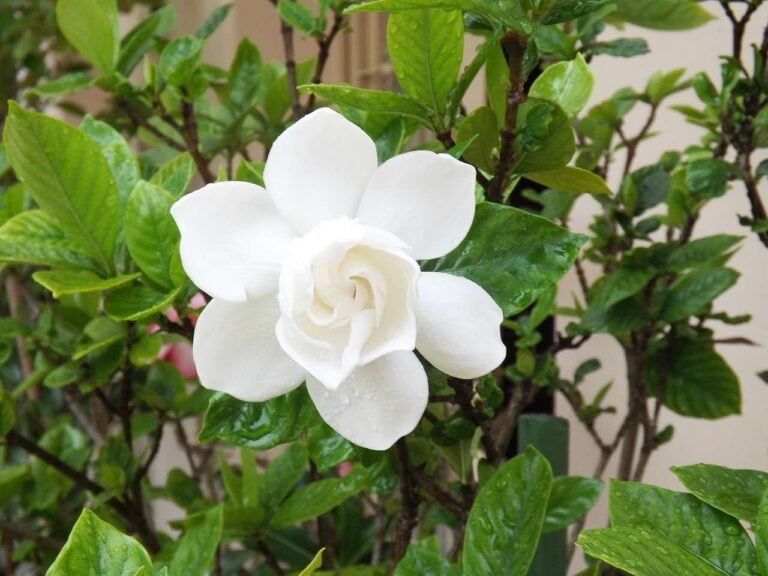
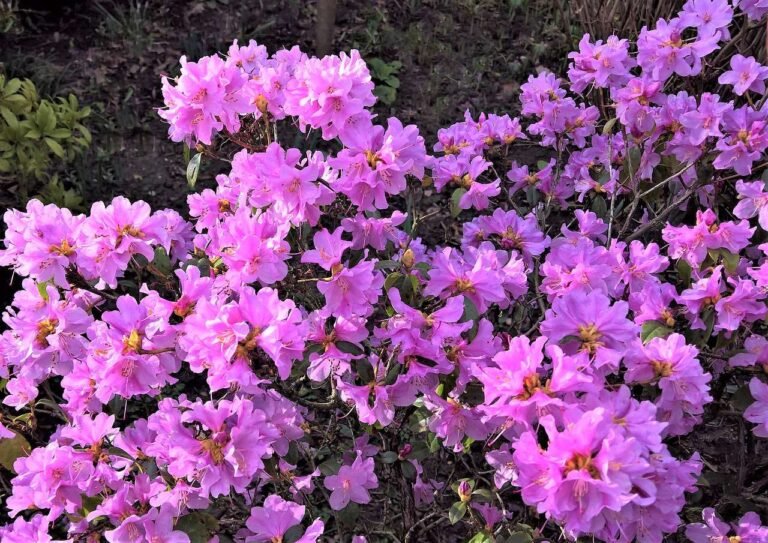
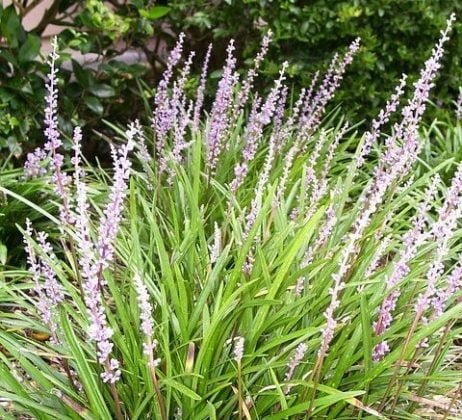
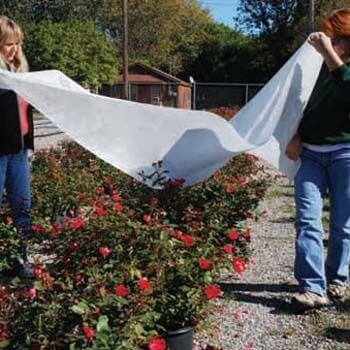
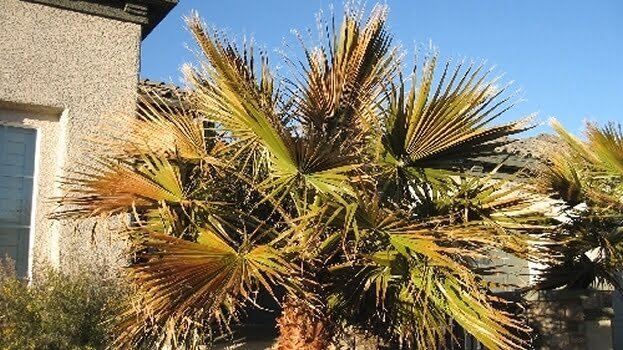
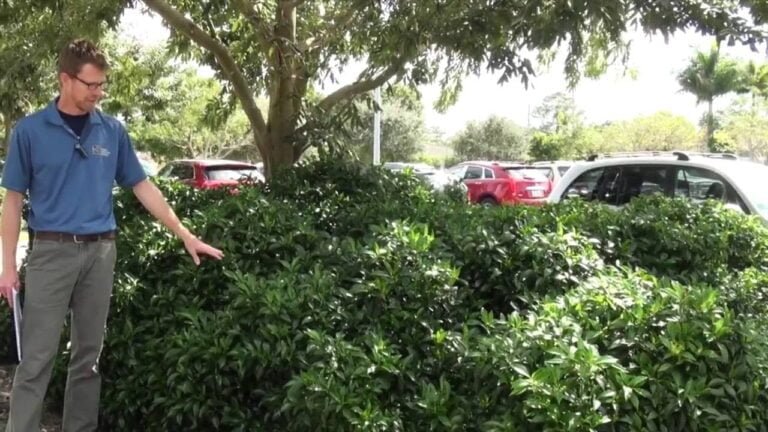
Very informative, thank you. I have a very bad problem with squarrels eating the plants. Can you give me any tips to keep them away. I bought a spray for squarrels and rodents but it does not affect them.
Greg,
I think perhaps it could be deer that is is eating your plants. I know they do love to eat the leaves on hibiscus. I don’t know where you live, but if you are near wooded areas or wild life sanctuaries, it is a good possibility it’s deer.
There are subdivisions where I took care of people’s shrubs, they had this same problem and it was deer coming from the woods. They used deer repellent, sometimes it worked other times it did not.
Fortunately, deer eating the leaves does not kill the plant. Of course it does make the plants look unsightly. You could contact your local county extension service, they can offer some suggestions.
Kurt
Kurt- I have three very healthy Hibiscus plants. One double large bush, one that is designed to be as a small tree and one lower bush design.
My problem is that I leave my place of residents in Florida for 3-4 months at a time in the summer. In that time my large bush grows so tall that it overtakes my driveway. To control the problem I prune it back in late June before we leave town. Unfortunately this seems to make it very happy and by the time I return in the fall it is ready to be trimmed again. That means that during the winter months it takes about 2 months to recover from the trim and I don’t get blooms until mid February.
I now have friends that are willing to prune the bush when needed during the summer. I just need to know when that would be the best time and how often it should be done in the summer months. Thank you, Vivian
Vivian,
They can lightly prune the top (to shape it up) in the middle of the summer, don’t have them cut it way back then. If you are not back by the end of September, have your friends at that time cut it back like you do in June. They can also put down some granular shrub fertilizer at that time, to help it bloom quicker.
Kurt
Thank you for all the information. I’ve read through the post twice and do not see information on sunlight needs. I have two hibiscus in Florida garden in dappled light with late day sun from west. They are OK but not great. Do they need more direct sun to flower well?
Cozee
Cozee,
Hibiscus do need at least 3 to 4 hours of direct sun to do their best. It can be during mid day or late afternoon. If all they are getting is filtered or partial sun, then this might be the reason why they are not flowering as much as they should.
Another reason could be lack of fertilizer throughout the year. You can try giving them plant food that is a “Bloom Builder” to improve the blooming process. Garden centers usually carry products specifically made for increasing blooms on plants for flowering.
Thank you for bringing that to my attention about not having information on light requirements in my article. I plan to add more information on Hibiscus care soon.
Kurt
Hello Kurt,
Thank you for you informative article on hibiscus. We moved early January in Southwest Florida and had the, as recommended by the landscaping company that took care of the community at that time, we had a row of about 16 hibiscus planted along the lanai. It was nice when they had just been planted and for a while but now they are way to high and their foliage is too close to the lanai. We would like a) to prune them at about half of their height and b) move them away from the lanai. When would be the best time to a) prune them and b) move them. When moving them, what should we do to prepare the soil so we do not lose them. On a side question, we have a lot of fire ants around the lot and I have a hard time to take care cleaning the flower beds and pulling the weeds out of the plants without being hit by these fire ants and I have a hard time to yield. Do you have any advise/tip on this topic. Thank you in advance for your help. (FYI… the landscaping company we were dealing with does not service our community any more)
Jean-Marie,
You can prune them back to half their height now, but do it as soon as possible. Preferably no later than the end of the first week of November.
Wait until springtime to transplant them back away from the lanai. Move them when the foliage is at the fullest, so you can judge the distance you need to replant them at. You can mix some topsoil to the ground, but do not need to put down anything else. Wait 30 days after replanting them before giving then any fertilizer. Wait 30 days after planting before pruning them.
As far as eliminating the fire ants you need to first locate the mounds, and put some fire ant bait around them. Do not pile it on top of the mounds, because it will disturb them and they might not take it. Just sprinkle a little bit around the mound when they are inside. This way when they come out to feed they will think that the bait is food. They should take some back to the queen, feed it to her and she will die, thus the rest of them.
Thank you for your comment, I hope this is helpful for you.
Kurt
Hi! I have a similar question as Jean-Marie, but I live in a North Florida, on Vilano Beach in St. Augustine. My hibiscus is growing over my Bahamian shutters and I will need to trim for now and relocate in the spring. Is it ok for me to trim now? Thanks!
Tracy,
It depends on how early the first cold weather occurs in your area. There is a big climate difference between North Florida and South Florida.
Hibiscus is a very sensitive plant when it comes to cold temperatures. If Hibiscus has new growth on it and cold weather occurs, then all the tender leaves could turn brown and die off. Plus the whole plant could be hurt badly.
So with that said it might be too late at this time to trim them back. If they are cut back now you could be taking a chance they will receive cold damage. It probably would be better to wait until spring.
Kurt
This is my second season in Florida. We arrive late November and go back to Micigan at the end of April. I would really love a double coral colored Hibiscus I saw in a yard recently. It was in full bloom. Leaving the Hibiscus with no care during the summer months makes me wonder if it can survive. I lived on the, southern east coast of Florida year round and we had some rain almost every day. Besides the water, is there anything I can do to keep it blooming during the winter months here In Southwest Florida? Any special tips you can give me to keep it healthy? Our soil is mostly crushed shells. Whart should I do to enhance it? Thank you so much for your help!
Anna
Anna,
Hibiscus should receive enough water from rainfall proving it rains on a consistent basis. If extreme drought occurs or dry periods of two weeks between rainfall, then it needs to be watered from irrigation or by hand during that time. Hibiscus in extreme dry conditions will begin to wilt and experience problems. Rainfall tends to slow down in the summer in Florida once the rainy season ends.
If it experiences insect problems during the summer and is not treated right away, then it will get out of control and be harmful to the plant. It will probably need to be fed proper nutrients at some time in the middle of the summer for it to stay healthy. You might want to consider having someone maintain it while you are gone, whether it be a professional company or perhaps a friend or neighbor.
As far as helping it with blooming during the winter, there products such as a “Bloom Builder” that should be found at local garden centers that you can use. For the type of soil you have you can add more top soil and apply granular fertilizer to the area to enhance it.
Kurt
Thank you, Kurt. Perhaps I should look for a different plant. Everyone I know goes home in the summer.
Have several hibiscus plants that form a hedge along my lanai screen.
Three of the six are losing their leaves. They turned yellow and pretty much all dropped off the three plants. The other three plants look normal. They are all about ten years old.
Is this normal or a too much water problem? Any suggestions?
Thank you.
Charlie,
Yellowing of leaves on Hibiscus can be a normal occurrence for them, the yellow leaves fall off and new ones grow back. However, if they are being over-watered on a consistent basis or in poorly-drained soil, this can also cause their leaves to drop off. Perhaps those three are receiving more water than the others. If they are being watered from a irrigation system check to see if it is out of adjustment. Check the area for proper grading and drainage.
Another reason is the ones that are having problems could have some kind of a disease from a fungus. This can be caused from too much water and the roots staying wet all the time. To be one the safe side spray them, and all the other ones with a liquid fungicide. Repeat 14 days after first treatment.
Kurt
Kurt,
Great information. Thank you for taking the time to share your knowledge. I live in Palm Beach County Florida. I love Hibiscus and I am looking for a smaller shorter version of a hibiscus to put in my landscaping. I don’t like the look when they are tall and thin. Any suggestions on a variety? Also what is a good blend on fertilizer (00-00-00), looking for the numeric designation? Thank you again for taking the time
Joel,
There are varieties of “Dwarf Hibiscus” which can grow shorter, around 2-3 ft. in height and have a spread around 2 ft. Since names, color of flowers, vary so much I recommend going to your local garden centers and nurseries to see what is available in your area. You can also contact your local county extension service for information.
A granular fertilizer you can use is, a general purpose shrub fertilizer like 6-6-6 or 8-10-10. Garden centers carry different brand names and numbers of granular shrub fertilizer, sometimes they even list the names of plants on the bags.
Kurt
I kept a lovely yellow hibicus in a contaniner for several years. Three years ago I transplanted it to the ground in a good location. It thrived for 2 years. At one point while fertilizing i believe it was put too close to the base and not carefully at the drip line. It is sickly looking now. very poor leaf color ie light green. very poor blossoms being small and sparse and thiis morning i noticed the color has changed from yellow to peachy. any ideas how i can help this love of mine?
Becky,
If granular fertilizer is piled up against the base of shrubs they can be damaged from this. Too much fertilizer can burn plants and the first sign of damage is seen in the leaves. However, usually the leaves will turn brown and immediately drop off.
They perhaps are being over-watered or there is poor drainage in the soil, this can cause problems with the blooming process and leaf color. They could have an insect problem which could cause buds to drop off and flowers being sparse, plus not blossoming properly. They could have a disease causing a fungus problem.
Treat them by spraying them with a liquid systemic insecticide, and with a liquid fungicide. Both can be found at your local garden centers. Check the soil to see if it is wet all the time. If you are using a sprinkler system to water them and they are getting too much water, make adjustments.
Kurt
We have a row of peach hibiscus. They recently became very “leggy” or “reedy.” Most of the leaves fell off but they seem to be filling out again. I’ve read that hibiscus (hibisci?) like acidic soil and I’ve been using coffee grounds quite liberally. Some people suggest using pickle juice. What do you think of using coffee grounds? Could this be why my bushes became so “leggy?”
Ellen,
Hibiscus prefer to have soil that is neutral to slightly acidic. A pH level of 6 to 7 is suggested for Hibiscus. I would not consider them to be in the category of “Acid Loving” plants as Azaleas, Camellias, and Gardenias. Generally they don’t need a whole lot added to the soil, just some general purpose shrub fertilizer.
Using coffee grounds in the soil for gardening is a common practice. Many people apply coffee grounds to hibiscus. However, there are different experiences people have using it on Hibiscus. Some say they have great results using it, some say they have had problems. Those that have problems tend to put too much down by piling it up around the plant. You might be putting down too much.
If you are going to apply it directly to the plant then I recommend applying a thin layer, mix it in with organic material like mulch and keep turning it around periodically. Coffee grounds mixed in compost piles is a good way to use them, so it can break down over time. Since it sounds like you prefer to use natural material over synthetic, having a compost bin is the way to go. This way you can use your kitchen waste mixed in with other materials for “Organic Gardening” on all your plants and shrubs. I have an article on organic gardening listed in the category “Gardening”. It has information on how to build a compost bin.
Hibiscus can become “leggy” so it is good to trim them back every once in a while to thicken them up. At this time of the year you can prune them. Leaves falling off Hibiscus can be a natural thing for them and usually new growth will appear shortly after. Since they seem to be filling out again they should be alright.
Whether or not what is happening to your Hibiscus is natural or a cause of too much coffee grounds, I would still suggest changing the amount plus how you are applying coffee grounds on them. As far as pickle juice, I don’t know anyone who has used it directly on plants, so I have not seen the results of using it.
Kurt
Kurt,
I live in central Florida. I have three big beautiful hibiscus in front of my home. They were planted two years ago and have really taken off. I would like to prune them a bit but need to know the best time to do this. I would hate to harm them, as they are so healthy and full. When should I prune them?
Thanks,
Shelly
Shelly,
You can prune your Hibiscus to shape them (light pruning), from now until the end of October.
If you need to cut them back like half way down, do it no later than the end of this month of September. This way the new growth will have enough time to be fully grown, so when in late November or the month of December if extreme cold weather happens to occur, they have a better chance of not being so severely damaged.
Of course the best way to protect Hibiscus, is to cover them with the proper material when there is a bad cold spell.
Kurt
Kurt, thank you for all of your guidance. I have now read that I am pruning my hibiscus at the wrong time of year. I live in Sanibel and the month is December. Hopefully we will not have extreme weather, however, I am prepared to cover them them if it does occur. My question is are there two times a year I can trim my plant halfway because it grows so fast? Also, it sounds like I can do some small trimming any time during the year. Am I understanding correctly?
Thank you, Lisa
Lisa,
The best time in Florida for cutting back Hibiscus halfway down, is during the springtime or at the end of summer. As far as when light pruning can be done depends on whether they are located in North and Central or South Florida.
For North And Central Florida no pruning should be done between the beginning of November and the second week of March. However, for South Florida light pruning generally can be done year round. It all has to do with the differences of temperatures during the winter months for each zone.
Since you live in Sanibel which I believe is considered South Florida, you should probably be able to do light pruning any time of the year. It all depends on the average low temperatures each area experiences. Keep in mind Hibiscus do not like temperatures below 50 degrees and new growth is sensitive to cold whether.
If you are still unsure contact your local county extension service for information specifically to your area.
Kurt
Kurt, I live in Venice Fl is that considered central or southern FL. I have purchased a triple braided hibiscus tree and wondered if I could plant it in a container, and if so what type of soil should I use.
jo Ann,
I believe Venice is considered central Florida and is in USDA Plant Hardiness Zone 9b. Zones are determined by the average annual minimum winter temperatures.
You could put it in a planter depending on the mature size it will become, height and the root system. The planter or pot has to be big enough so when it reaches mature growth it does not become root bound or fall over from the wind.
You can use basic potting soil that is sold at any garden center or nursery. Use a pot that drains water, like one with holes in the bottom.
Kurt